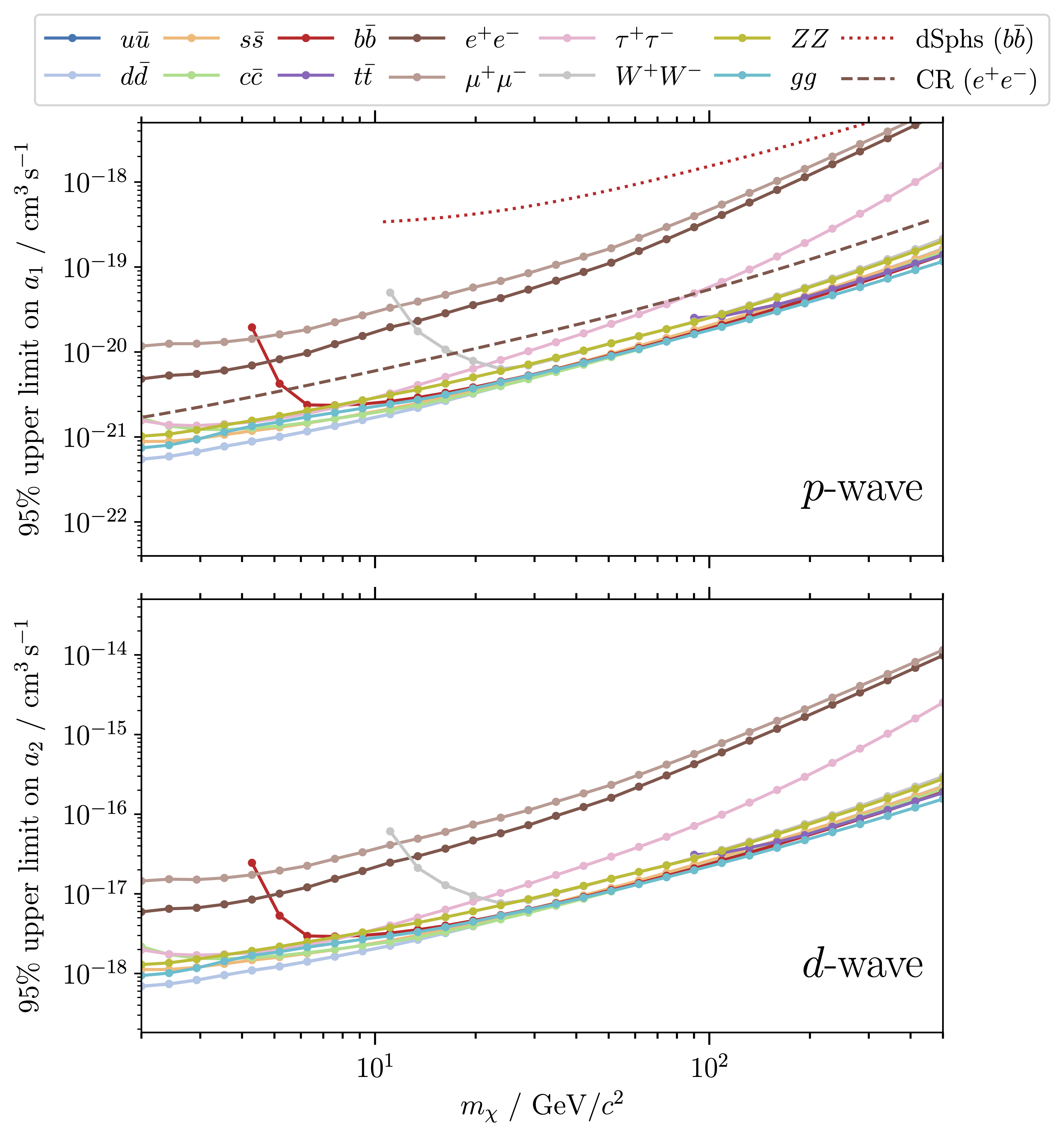No evidence for p- or d-wave dark matter annihilation from local large-scale structure
Published in Physical Review D (Submitted), 2023
Recommended citation: A. Kostic, D.J. Bartlett and H. Desmond (2023). "No evidence for p- or d-wave dark matter annihilation from local large-scale structure." arXiv:2304.10301.
Abstract
If dark matter annihilates into standard model particles with a cross-section which is velocity dependent, then Local Group dwarf galaxies will not be the best place to search for the resulting gamma ray emission. A greater flux would be produced by more distant and massive halos, with larger velocity dispersions. We construct full-sky predictions for the gamma-ray emission from galaxy- and cluster-mass halos within $\sim 200 {\rm \, Mpc}$ using a suite of constrained $N$-body simulations (CSiBORG) based on the Bayesian Origin Reconstruction from Galaxies algorithm. Comparing to observations from the Fermi Large Area Telescope and marginalising over reconstruction uncertainties and other astrophysical contributions to the flux, we obtain constraints on the cross-section which are two (seven) orders of magnitude tighter than those obtained from dwarf spheroidals for $p$-wave ($d$-wave) annihilation. We find no evidence for either type of annihilation from dark matter particles with masses in the range $m_\chi = 2-500{\rm \, GeV}/c^2$, for any channel. As an example, for annihilations producing bottom quarks with $m_\chi = 10 {\rm \, GeV}/c^2$, we find $a_{1} < 2.4 \times 10^{-21} {\rm \, cm^3 s^{-1}}$ and $a_{2} < 3.0 \times 10^{-18} {\rm \, cm^3 s^{-1}}$ at 95\% confidence, where the product of the cross-section, $\sigma$, and relative particle velocity, $v$, is given by $\sigma v = a_\ell (v/c)^{2\ell}$ and $\ell=1, 2$ for $p$-, $d$-wave annihilation, respectively. Our bounds, although failing to exclude the thermal relic cross-section for velocity-dependent annihilation channels, are among the tightest to date.
 95% upper limit on the dark matter $p$-wave (upper, $\ell=1$) and $d$-wave (lower, $\ell=2$) annihilation cross-section parameter, $a_\ell$, where the annihilation cross-section is $\sigma v = a_\ell (v/c)^{2\ell}$. The solid lines and points are from this work. Each constraint is derived at a fixed dark matter particle mass $m_\chi$ as indicated on the $x$-axis. The red dotted line is a constraint obtained from dwarf spheroidal (dSph) satellites of the Milky Way for the $b\bar{b}$ channel. We find that our constraints are approximately two orders of magnitude tighter than those from dSphs due to the larger velocity dispersions in massive extragalactic halos. The dSph constraint for $d$-wave is off the top of the plot. The brown dashed line is the constraint for the $e^+e^-$ channel, directly detecting the resulting electrons and positrons, assuming they are produced by the galactic halo. This is slightly tighter than our $e^+e^-$ constraint.
95% upper limit on the dark matter $p$-wave (upper, $\ell=1$) and $d$-wave (lower, $\ell=2$) annihilation cross-section parameter, $a_\ell$, where the annihilation cross-section is $\sigma v = a_\ell (v/c)^{2\ell}$. The solid lines and points are from this work. Each constraint is derived at a fixed dark matter particle mass $m_\chi$ as indicated on the $x$-axis. The red dotted line is a constraint obtained from dwarf spheroidal (dSph) satellites of the Milky Way for the $b\bar{b}$ channel. We find that our constraints are approximately two orders of magnitude tighter than those from dSphs due to the larger velocity dispersions in massive extragalactic halos. The dSph constraint for $d$-wave is off the top of the plot. The brown dashed line is the constraint for the $e^+e^-$ channel, directly detecting the resulting electrons and positrons, assuming they are produced by the galactic halo. This is slightly tighter than our $e^+e^-$ constraint.
